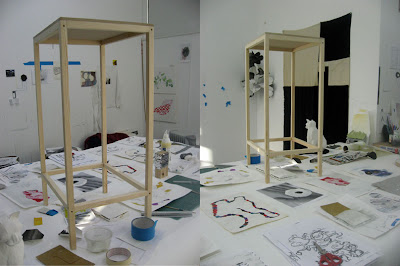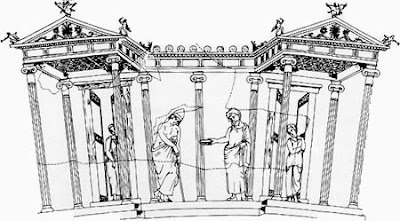Over espresso near Monte Testaccio in Rome I hear that the ancient Romans used the body as a metaphor for the city and vice versa. The ports, points of entry, were particularly subject to protection, hygiene. If you look down at the model of ancient Rome in EUR you cant help but read the aquaducts as veins, bringing life gushing directly to the organs of power. They invented concrete of course.
Nowadays I spend a lot of time wandering social housing from the 60s and 70s in South London: Heygate, Aylesbury, Brandon. Most nights I wander the web, finding similar patterns of movement and recursion, pieces of colour stuck between railings. A broken spectrum.
Online: The Bartlett tells me about the syntactical structure of cities; that poverty and crime still thrive like infection in places with no thoroughfare, dead ends, periodontal pockets.
I live in such a street, described by Mayhew in London Labour and the London Poor as the vilest street in London. It was isolated by the canal and the railway. Cut off. The structure of the city itself is apotropaic; read the warning signs.
I start thinking about Ballard and his terrible outskirt futures; Kubric, Kingsmead; the pre-inscription of violence.
Walking through the Brandon estate I find a Henry Moore; a patinated green woman. She has assumed a copper green, an attempt at camouflage in the summer grass, off by a few tones at least. Bilious. She leaks, passively staining the concrete plinth. A child is riding her like the raft of the medusa, waving at the apex of hope. I wonder what it is doing here, this bifurcated torso. A benevolence to provide the estate not only with telephone cabins, stamp machine and library but with a statue. Not a forest of statuary like the ancient palatine, where it would be quite normal for them to speak and to seduce those foolishly out late. In Rome even today there are five talking statues still engaged in political satire and pasquinades. On the estate there is just this mute one; no eyes or mouth to speak of, just a lumpy bisected feeling of approximate body, cast in bronze and placed on a concrete plinth on a small grassy knoll. The place of the assassin? There is also the image of a mammoth stuck to the library. Prehistoric. Extinct. Fossils.
Moore signifies establishment: ubiquitous to the point of invisible; corporation, incorporation into the social body. It’s not ‘Today’s Homes’…is it? It’s not POP, it’s not savvy. It’s not street, except as furniture. At first I wonder why it hasn’t been stolen, melted down like wartime railings, but I realise that it is at the centre of an ampitheatre, viewed from galleries all around: prisoner in a many-eyed panopticon. So visible that the lady vanishes.
The Heygate, curiously, has a walled garden. It is a secret garden at ground level, but from the concrete walkways you can see it contains a caryatid, another broken woman, noted as a remainder of Rotherhithe public library. Concrete demonstration: the concrete dream of modernism is built around the secret gardens of Greco-roman antiquity. Like a Barbican. You can see it from above.
image: Walworth now & then
I collect as I walk: encounters, photographs. The camera stops me from limping.
The city is demarked. Territories within territories, often drawn with fragile tapes, no go zones, political withins and withouts; provisional boundaries, pales of settlement, areas behind bars where rubbish accumulates, traffic islands.
Portals and lost places. Andromeda’s rock?
From my window I watched the slow death of modernism: a 3D geometric plaza made of engineering brick disrupted over time by scrubby trees and turned fabulously green every spring by thirsty grass painting the cracks. No-one went in it, a lost zone that would have been beautiful as a drawing. An abandoned place.
Architectures appear rigid, but as you walk them over time their provisional nature becomes clear, conservation, attention, demolition. You cant get a mortgage on high rise concrete.
Are estates islands?
Searching youtube for these localities I see what people want to show: mobile phone uploads of girls snogging in tower block living rooms, kids in hoods kicking down doors, beatings in stairwells, soap opera stagings, swaggerings. Eye level low on the familiar walkways, the world seeming bigger with bravado. Mass observation, surveilling each other. Eyes in our hands.
Rilke’s panther: the eye that can't see past the bars.
The stone lions at New York public library blindfolded by snow.













































